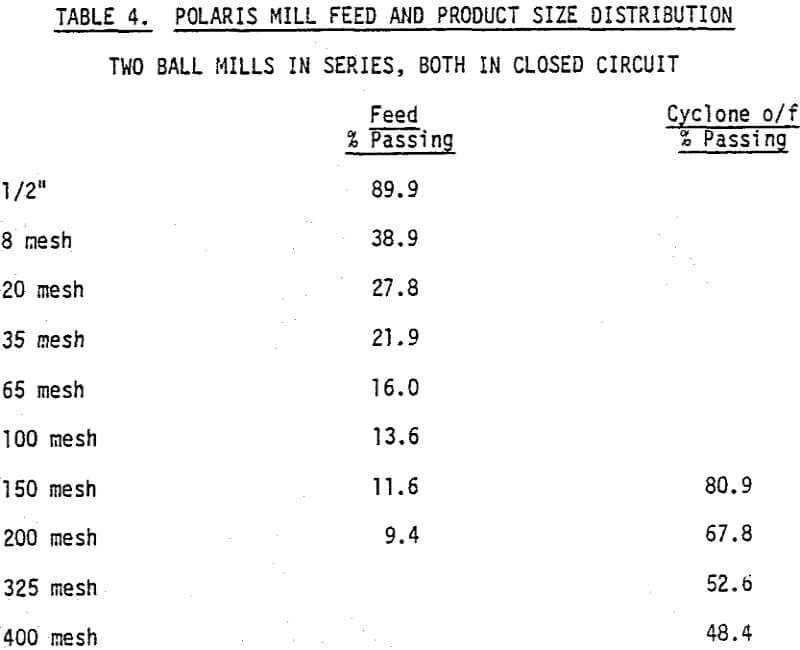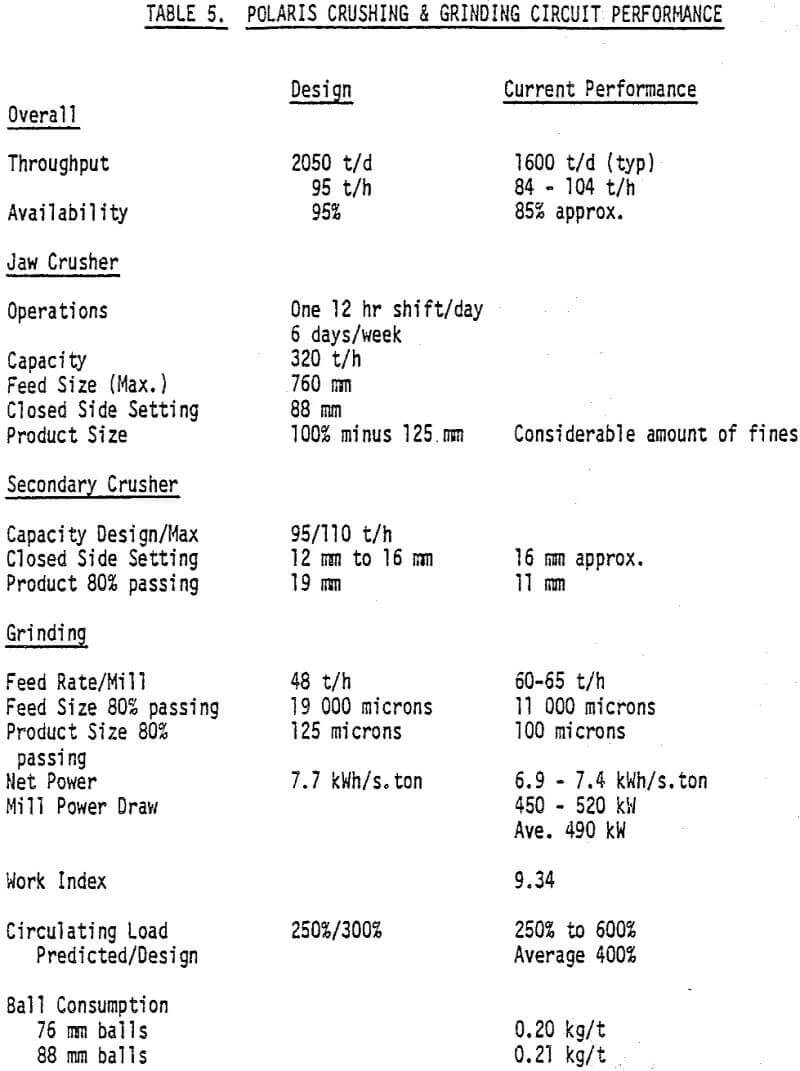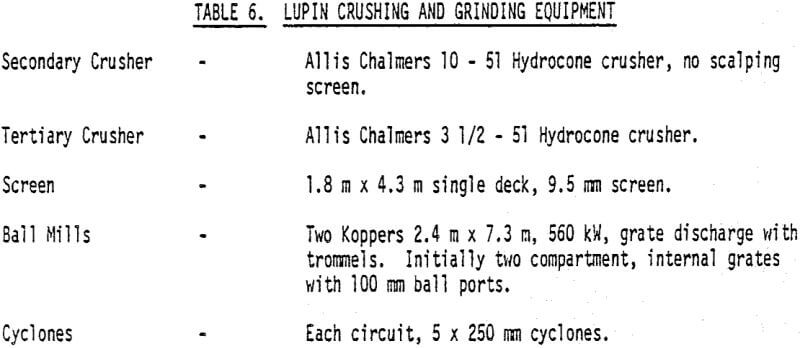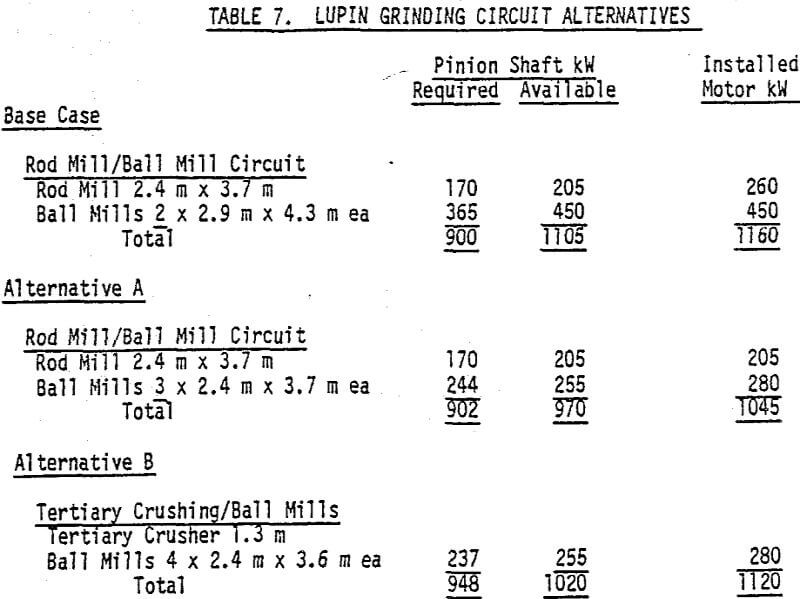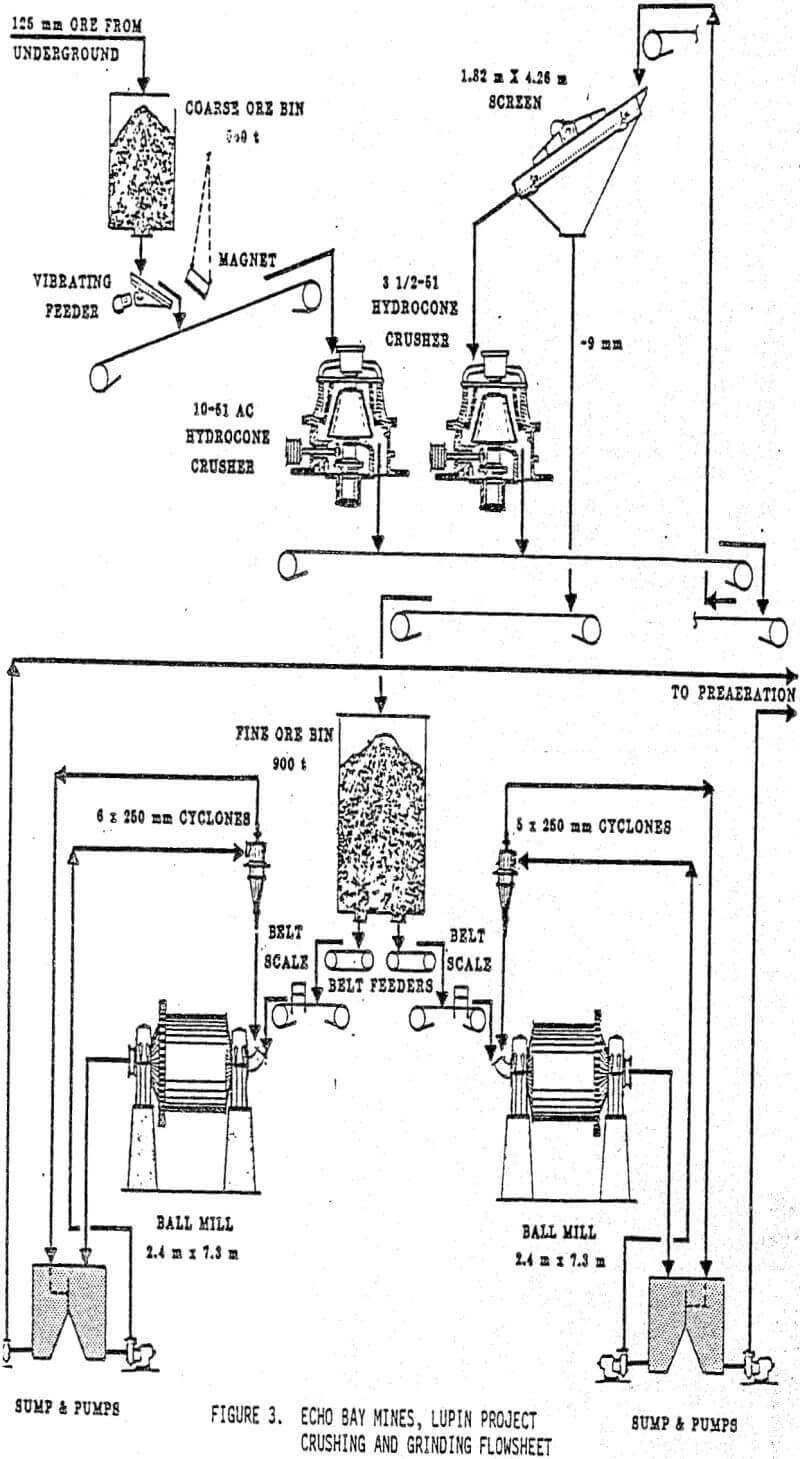Table of Contents
A number of challenges are faced when a mine is established at a remote site in northern Canada. The distance from suppliers, accessibility to the site, constraints on transportation of men and materials, and mining frozen ore are considerations which influence design.
Mine Sites
The Polaris Project of Cominco Limited of Vancouver is located on Little Cornwallis Island at latitude 75°30’N, about 1500 km from the North Pole and 100 km northwest of Resolute. The mine is on the shore of Crozier Strait but sea lanes are only open for about 6 weeks per year.
Echo Bay Mines’ Lupin Mill on the western shore of Contwoyto Lake is 400 km northeast of Yellowknife in the N.W.T., about 160 km south of the Arctic Circle. Several large mines have been producing in the Yellowknife area since the early 1940’s.
Polaris Concentrator
The crushing and grinding circuit were installed. Both crushing stages are in open circuit without scalping screens. There is no fine ore storage; restrictions of space preclude storing such material on the barge and if partially thawed would refreeze on a stockpile. Consequently, secondary crusher discharge is conveyed directly to the mills. This is a unique feature of the design.
Next, the rod mill/ball mill circuit was revised to two stages of ball milling with the secondary mill in closed circuit. Because of concerns about the top size for ball mill feed, this change necessitated another look at the crushing circuit.
Primary jaw crushing and two stages of cone crushing in open circuit, without scalping screens, were considered. This would allow the secondary crusher to be sized to take larger top size feed and minimize the amount of plus 25 mm in the primary mill feed, but two crushing stages were preferred.
Now that the major equipment had been selected, the circuits had to be decided.
Base Case – Rod mill, ball mill circuit.
Scheme 1 – Primary ball mill in open circuit, secondary ball mill in closed circuit.
Scheme 2 – Primary ball mill in closed circuit, secondary ball mill in closed circuit.
Scheme 3 – Two ball mills in parallel closed circuit.
Mill feed is controlled by a belt scale on the secondary crusher feed conveyor. This controls the two Hydrostroke feeders below the underground coarse ore pocket. Since the crusher feed conveyor is 384 m long, there is a long response time between setting the feed rate and arrival of ore at the mill.
Mills have been operated in parallel or in series. When in parallel, cyclones are split two per mill; when in series, underflow from one cyclone reports to the primary mill and underflow from three cyclones is recycled to the secondary mill.
Lupin Mill
The fine crushing circuit comprises secondary crushing in open circuit and tertiary crushing in closed circuit with a screen. Minus 9 mm screen undersize is conveyed to a 900 t capacity fine ore bin.
The primary consideration was that all equipment and materials had to be flown to the site. The maximum dimensions were set by the hold of the Hercules aircraft.
Rod and ball mill work indices were reviewed. The total installed power would be insufficient to allow for normal hardness variation and the power split between the rod and ball mills was wrong. The ball mills would have to be 2.9 m x 4.3 m with 450 kW installed to grind a typical 14 mesh rod mill product to final size.
Therefore, alternative grinding circuits were evaluated. For 900 t/d these were:
Base Case – Rod mill and two ball mills. (Insufficient power and wrong split; mills too large to fit Hercules transport.)
Alternative A – Rod mill and three ball mills. (Inconvenient to split rod mill discharge to three ball mills; will fit into Hercules.)
Alternative B – Tertiary crusher and four ball mills. (Secondary crusher no longer at the limit of its reduction capability; all mills the same (2.4 m x 3.7 m) and fit into the Hercules.)
Sizes, power required and available, and installed motors for these alternatives are shown in Table 7. Alternative 3 was attractive in that rod handling, including air transportation of rods, would be avoided. Disadvantages were the marginally higher power requirement due to the reduced efficiency of grinding coarse (-10 mm) feed and higher capital cost.
The operating flexibility of a rod/ball mill circuit has had to be sacrificed to meet the design constraints. Although the selected circuit has limitations, it is operable.
The slurry circuit around the mills has an unconventional pump box arrangement, introduced as a result of cost saving flowsheet design for the downstream gold recovery circuit. To achieve low cyanide consumption, there is a pre-aeration stage before cyanide leaching. Instead of thickening the ground product before pre-aeration and filtering the slurry before cyanidation, pre-aeration is run at about 32% solids in three tanks equipped with air lift agitators.
Mechanical availability has been about 90%. While operating as two-compartment mills they had to be stopped to add balls to the discharge compartment; the 100 mm ports in the diaphragm grates were not sufficient to pass worn balls from the first compartment to make up for media consumption in the second compartment.



